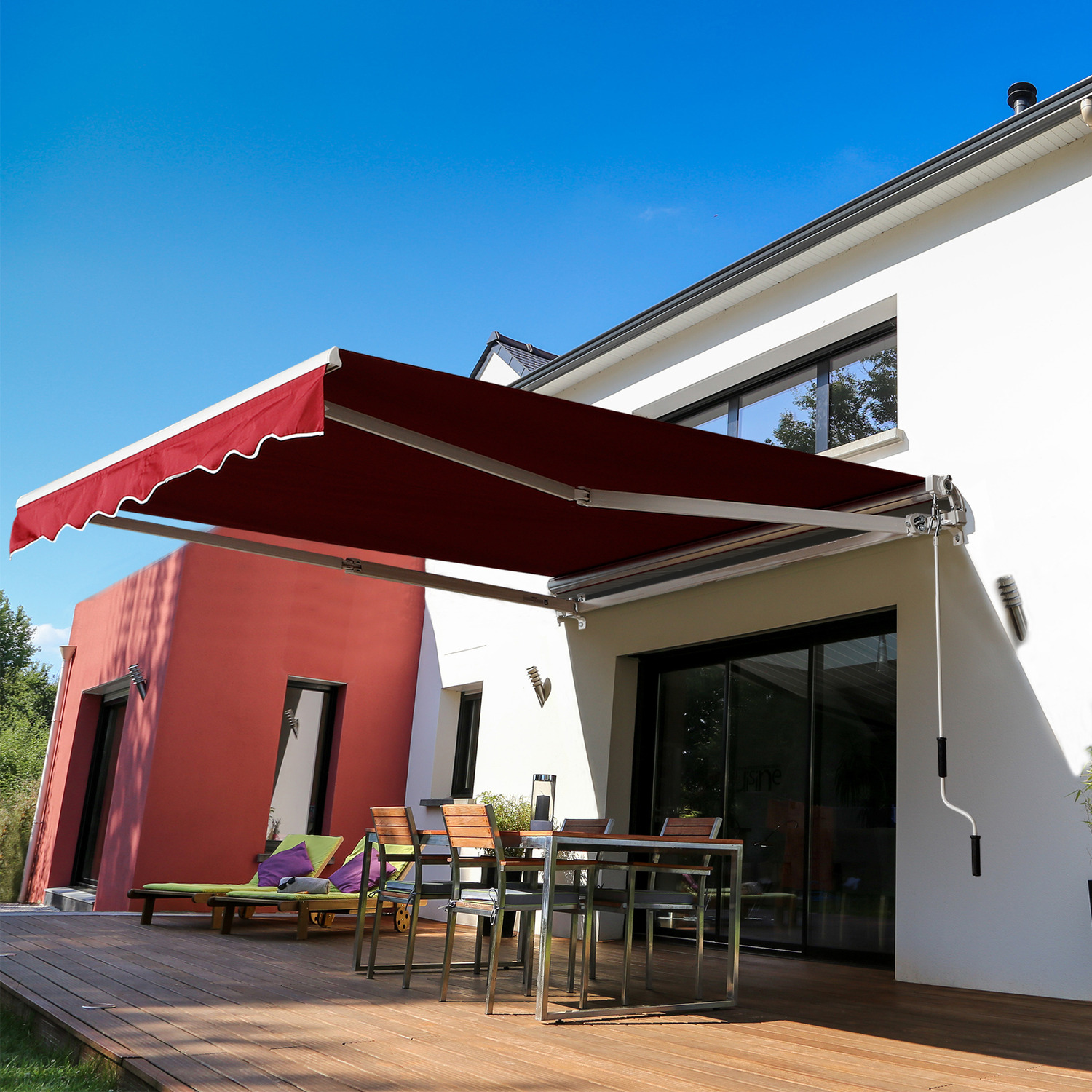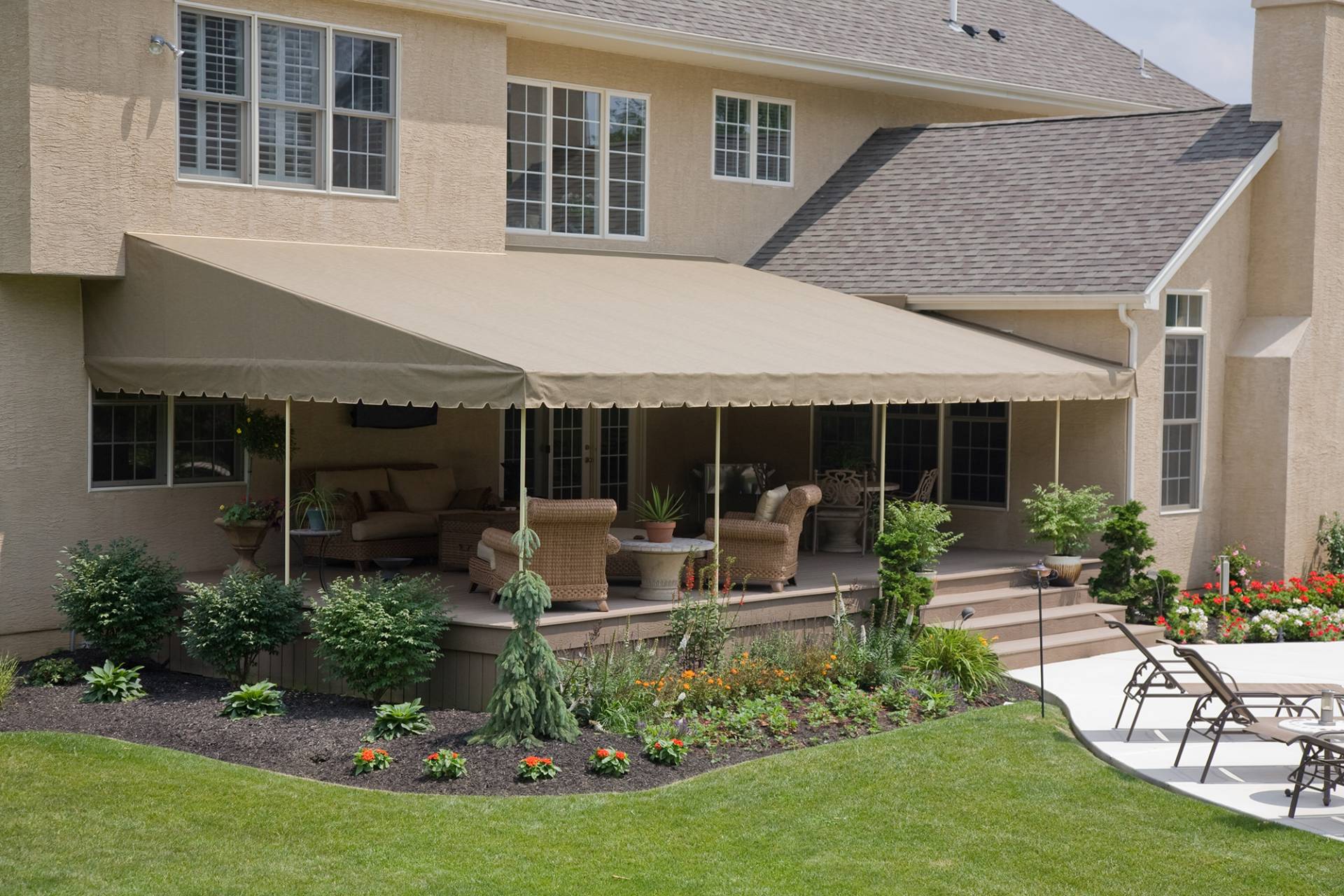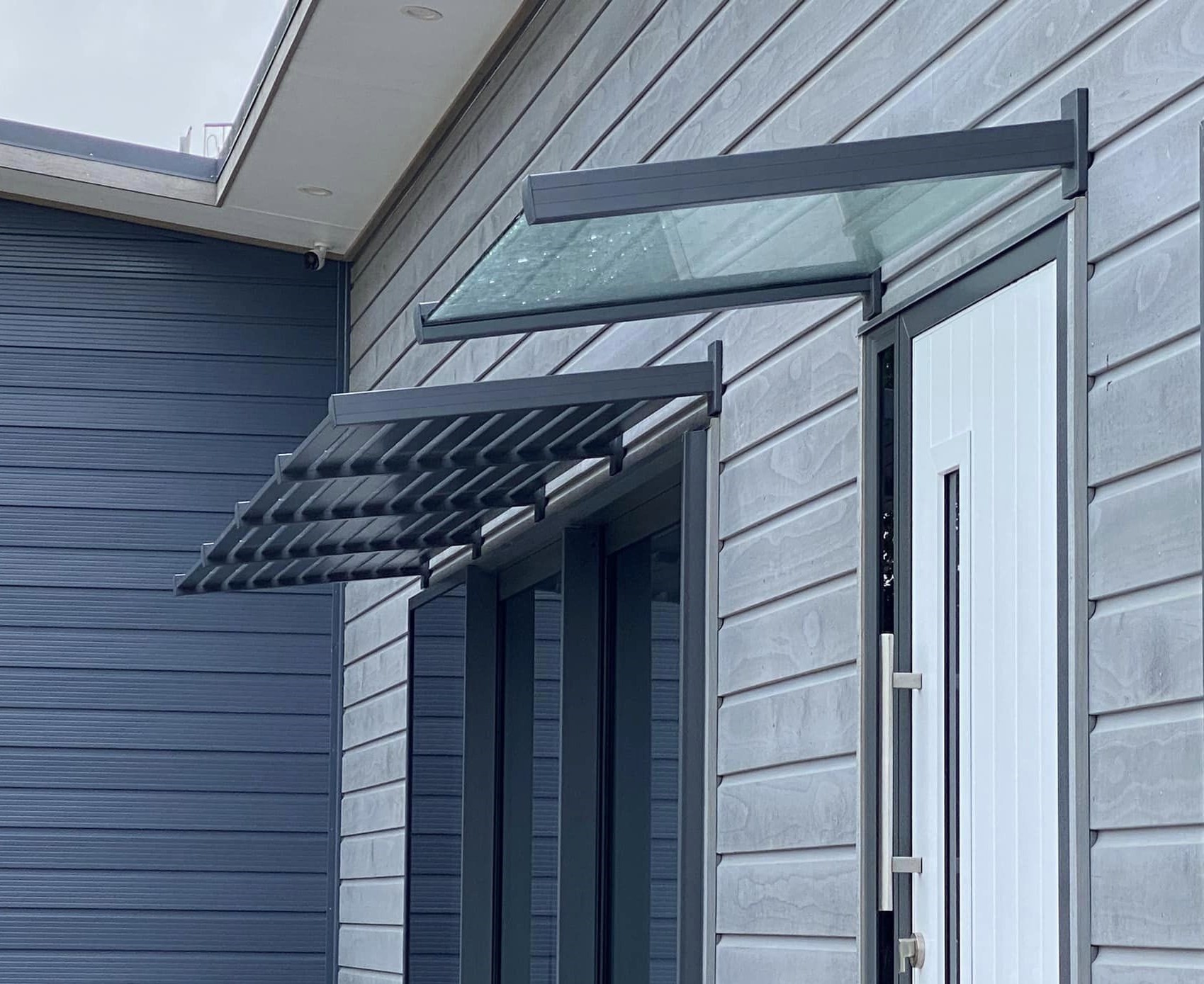Introduction: The Quest for the Perfect Outdoor Shelter
In the realm of outdoor living, shade solutions play a pivotal role in enhancing comfort and aesthetics. Two popular contenders in this arena are awnings and canopies, each offering distinct advantages tailored to different needs and preferences. This comprehensive guide delves into the world of shade wars, aiming to clarify the differences between awnings and canopies, helping you make an informed decision for your unique outdoor space.

Awnings: The Permanent Guardians of Shade
Definition and Types
Awnings are fixed or retractable shade structures typically attached to the exterior wall of a building. They extend outward, providing shelter from the sun’s rays, rain, and even light snow. Awnings come in various forms, including stationary fabric, motorized retractable, and manually operated models, each designed with specific functionality and durability in mind.
Material Matters
Materials used in awning construction are chosen for their resilience against the elements. Canvas, acrylic, and vinyl are popular choices due to their UV resistance, water repellency, and ability to withstand wear and tear. Metal frames, often made of aluminum or steel, ensure structural stability.
Advantages of Awnings
- Energy Efficiency: By blocking direct sunlight from entering through windows and doors, awnings can significantly reduce cooling costs during summer months.
- Customization: From color to pattern, awnings offer a range of customization options to complement any architectural style.
- Durability: Designed for long-term use, quality awnings can last for years with proper maintenance.

Canopies: The Portable Shade Solution
Versatility Unleashed
Canopies are freestanding structures that provide temporary or semi-permanent shade coverage. Unlike awnings, they are not attached to buildings and can be easily moved or dismantled as needed. This flexibility makes them ideal for events, backyard gatherings, or seasonal shading requirements.
Construction and Design
Canopies consist of a fabric roof supported by poles or a folding frame. The fabric is usually made from polyester or other weather-resistant materials, while frames are constructed from lightweight yet sturdy materials like aluminum or steel.
Applications Galore
- Outdoor Events: From weddings to picnics, canopies offer instant shelter, creating a defined space for guests.
- Market Stalls & Exhibitions: Vendors appreciate their portability and ease of setup for displaying goods.
- Garden Retreats: They provide a cozy shaded area for relaxation or al fresco dining.

Battle of the Features: Awnings vs. Canopies
Installation and Maintenance
Awnings require professional installation due to their permanent or semi-permanent nature. Maintenance includes regular cleaning and, for mechanical types, occasional checks on the retracting mechanism.
Canopies, on the other hand, are DIY-friendly with most models designed for easy assembly and disassembly. Cleaning and storage are necessary to prolong their lifespan.
Cost Considerations
While awnings may have a higher upfront cost due to their durable materials and installation requirements, they offer long-term value with energy-saving benefits and longevity.
Canopies, being more affordable upfront, are a cost-effective solution for those seeking flexibility without a significant investment.
Style and Integration
Awnings integrate seamlessly into a building’s architecture, enhancing curb appeal and offering a more polished look.
Canopies, though versatile, may lack the tailored fit and aesthetic integration of awnings but make up for it with their adaptability to various settings and uses.

Making the Right Choice: Factors to Consider
- Purpose: Determine if you need a permanent shade solution or one that offers flexibility for changing needs.
- Space Availability: Consider the dimensions of your outdoor area and whether a fixed attachment or a free-standing structure would be more suitable.
- Budget: Evaluate both upfront and potential long-term savings when comparing costs.
- Aesthetics: Reflect on how the shade structure will complement your home’s exterior or the ambiance of your event.
- Maintenance Commitment: Be honest about the level of care you’re willing to provide for your shade solution.
Innovative Designs and Smart Features: Elevating Outdoor Living
As technology advances, so do the features and designs of awnings and canopies, pushing the boundaries of functionality and user experience. Here, we explore some of the latest innovations that are revolutionizing the way we enjoy our shaded outdoor spaces.
Smart Awnings: Technology Meets Comfort Smart home technology has found its way into the realm of outdoor shading, with motorized awnings now equipped with smart sensors and controls. These systems can automatically extend or retract based on weather conditions, sun intensity, or pre-set schedules, ensuring optimal shade and protection without manual intervention. Many models can be integrated with home automation systems, allowing you to control your awning via smartphone apps, voice commands, or even based on the position of the sun.
Lighting and Accessories: Enhancing Ambiance To further elevate the outdoor living experience, awnings and canopies now come with integrated lighting solutions. LED strip lights, pendant lamps, or even mood lighting can transform your shaded area into a cozy evening retreat. Some designs incorporate built-in speakers or USB charging ports, turning your outdoor space into an entertainment hub perfect for gatherings or solo relaxation.
Eco-Friendly Materials: Sustainability in the Spotlight Sustainability is a growing concern, and manufacturers are responding with eco-friendly materials for awnings and canopies. Recycled fabrics, biodegradable materials, and low-VOC coatings are becoming increasingly popular, offering durability and UV protection while minimizing environmental impact. These green alternatives not only contribute to a healthier planet but also align with the values of environmentally conscious consumers.
Retractable Roof Systems: The Best of Both Worlds For those seeking the versatility of a canopy with the sophistication of an awning, retractable roof systems offer an innovative solution. These systems provide adjustable coverage, allowing users to open and close the roof depending on weather conditions or personal preference. With designs that mimic pergolas or modern architectural features, retractable roofs blend aesthetics with functionality, enhancing outdoor spaces with adaptable shade and a touch of luxury.

Conclusion: Embracing the Perfect Shade Companion
In the shade wars, there’s no definitive winner—only the perfect match for your unique situation. Whether you opt for the permanence and elegance of awnings or the versatility and convenience of canopies, understanding their distinct features and applications is key. By carefully weighing your needs, preferences, and budget, you can transform your outdoor space into a comfortable haven, shielded from the elements, and tailored to your lifestyle. So, gear up for your next outdoor adventure or relaxation session with the knowledge to choose wisely between these two formidable foes in the battle for the ultimate shade solution.
